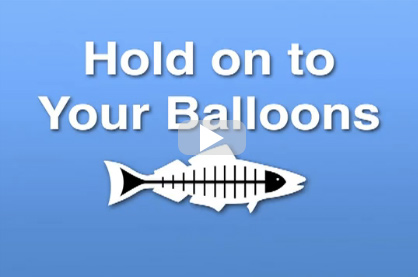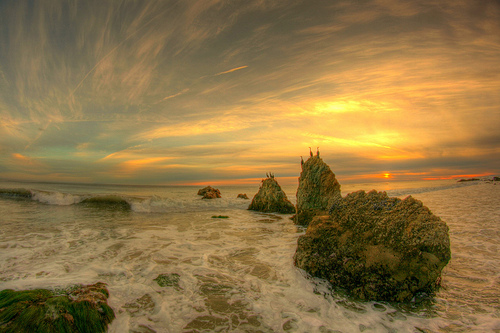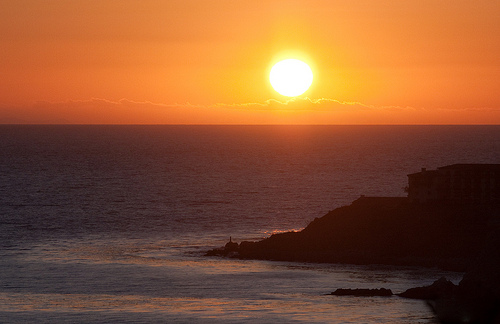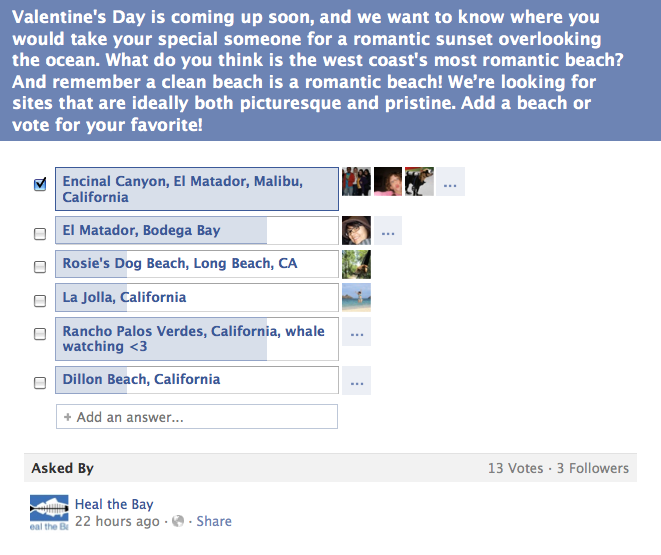Even if you live miles from the ocean, there are some simple steps you can take in your home to protect your favorite beach (as well as your local neighborhood, park or river).
Over the coming weeks, we will be sharing short, educational and fun videos with tips on 10 ways you can heal the Bay — so keep an eye on this page (or subscribe to our YouTube channel)!
Our first video comes from Melissa Aguayo, Heal the Bay’s Speakers Bureau Manager.
Hold on to Your Balloons

10 Ways You Can Heal the Bay
1. Keep your Litter out of the Gutter
Keep trash, yard trimmings, and other litter off the street and out of the storm drains so they don’t end up in the ocean. Clean up after your dog, cat, or horse to keep the waste out of the storm drain and away from your favorite beach. Report full catch basins to the Dept. of Public Works: L.A. City: (800) 974- 9794 L.A. County: (800) 303- 0003. For non-L.A. County residents find your local city numbers.
2. Bag the Plastic Bags
Instead of accepting plastic bags from the grocery store, bring your own reusable bag. Single-use plastic bags create loads of unnecessary litter; they are easily blown by the wind, and they often end up in the ocean. Plastic takes hundreds of years to degrade, and creates hazards for marine life and other wildlife.
3. Hold on to Your Balloons
Released helium balloons eventually pop and fall back to land, ending up in the ocean where animals mistake them for food. Always pop balloons and put them in the trash.
4. Beware of Six-Pack Rings
Avoid buying them, and any other loop of plastic, or cut them up before you throw them out. Marine animals choke on garbage and get tangled in trash. Unlike people, birds and fish don’t have hands to remove items caught around their necks.
5. Don’t Be a Drip
Overwatering is wasteful and moves trash and toxins to the ocean. Turn off the faucet when you don’t need it. Fix leaky pipes and install low-flow shower heads and toilets. Help the sewage treatment plants do a better job by conserving water.
6. Go Non-Toxic
If you must use harsh chemical products, when you are through bring them to authorized household hazardous waste drop-off centers. For locations near you, call (800) CLEAN-UP. Instead, avoid buying products like liquid drain openers. Use pesticides as little as possible and look for non- toxic alternatives. Use compost instead of chemical fertilizers. Best of all, using simple recipes and ingredients, you can make your own environmentally-friendly cleaners.
7. Make a Clean Sweep
Use a broom, not a hose, to clean sidewalks and driveways. Watering the driveway won’t make it grow! Sweep trash into a dustpan, not the gutter, and use the garden clippings as mulch to fertilize your yard.
8. Recycle Used Motor Oil
You can recycle your used motor oil at gas stations, auto parts stores, and garages. Never pour it down the drain, in the gutter, or on the ground. Motor oil is extremely toxic.
9. Go to a Car Wash
Most car washes recycle their water. But if you clean your car at home, always wash it on your lawn to recapture lost water, use a bucket to conserve water and consider a ‘waterless’ car wash like Lucky Earth or Ecover.
10. Become a part of Heal the Bay
Help us continue to protect the Santa Monica Bay and all of California’s coastal waters; become an environmental advocate, volunteer or join as a member.



 VS.
VS. 


